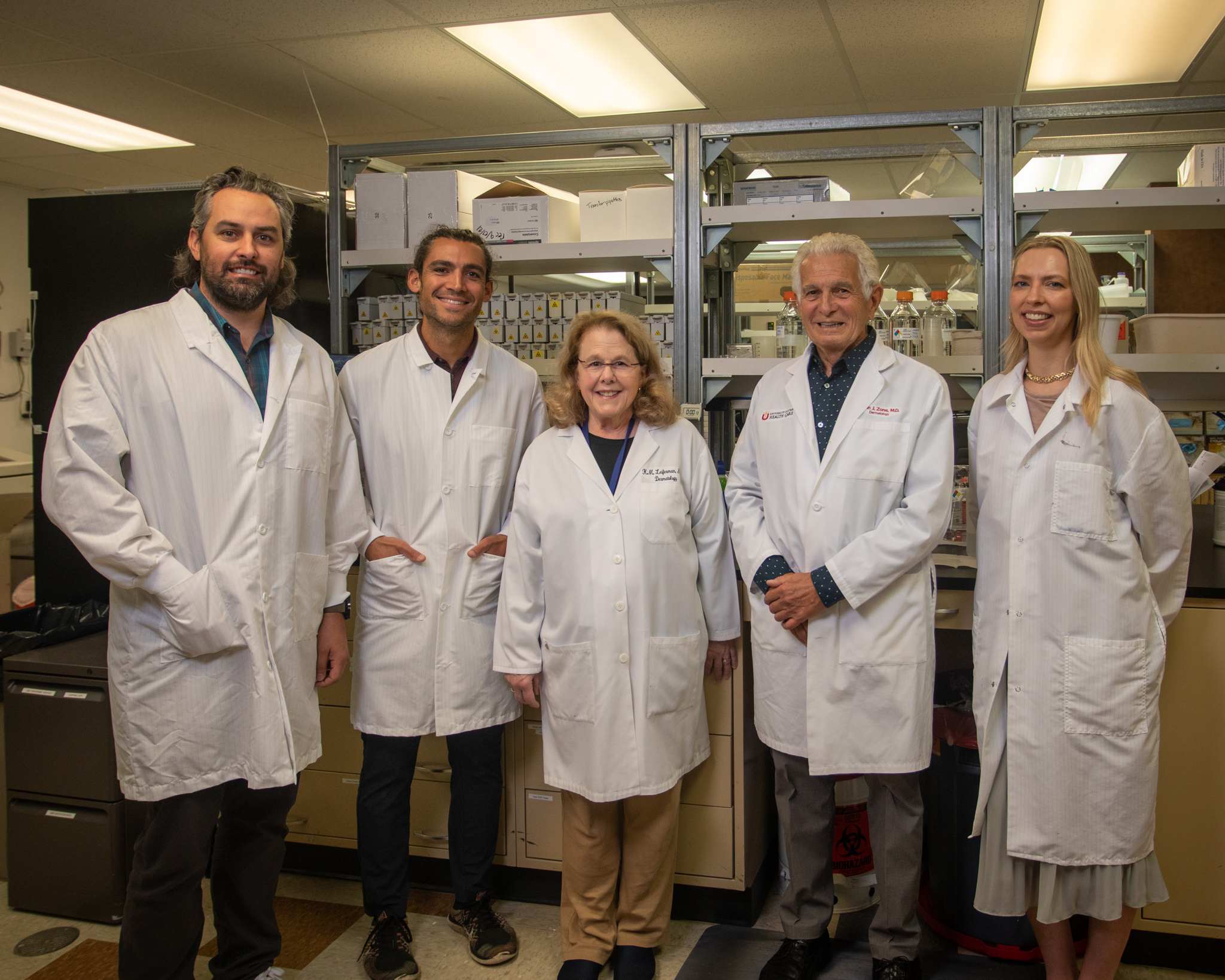
Immunodermatology Laboratory

Immunodermatology Laboratory
Immunodermatology Laboratory
Immunodermatology testing aids in the diagnosis and treatment monitoring of many diseases affecting epithelial organs including skin and oral, genital, and ocular mucosa, and gastrointestinal and respiratory tracts. Tests are performed on blood and tissue specimens that are submitted from referring clinicians and medical facilities across the United States.
FAQs
Broadly speaking, immunodermatology is part of the whole understanding of the human integument, including skin, mucous membranes, hair, and nails, that is related to immunology and covers clinical disease as well as laboratory testing. Laboratory Immunodermatology is a key component of comprehensive dermatology care. Testing in the Immunodermatology Laboratory aids in the diagnosis and monitoring of several immunological diseases with cutaneous involvement.
Immunodermatology testing importantly aids in the diagnosis of several diseases. In addition, the testing results are useful in assessing disease expression and following disease activity. Increasingly, the testing is recognized as helpful even in common conditions such as itching and eczema. The range of clinical findings that immune-mediated diseases present with is large, often with overlapping features. Immunodermatology test results are beneficial for sorting out the etiology and, therefore, directing treatments.
Testing in the Immunodermatology Laboratory aids in the diagnosis of several immunological diseases with skin and mucous membrane involvement. The testing is helpful, not only in in establishing diagnoses, but also determining treatments and monitoring response to treatment. Diagnosis of immunobullous diseases is particularly aided when both serum and skin/mucous membrane biopsy specimens are tested by indirect immunofluorescence and by direct immunofluorescence, respectively, because indirect immunofluorescence and ELISA results on serum will classify disease subtypes based on the very sensitive DIF findings. Furthermore, many immune-mediated diseases have overlapping clinical features, and the testing is helpful in distinguishing the disorders. Also, immune-mediated diseases may present with secondary features or with features of common conditions, and the testing is helpful to determine the etiology. As the population ages with more tendency to develop immune-mediated diseases and as these diseases are better defined, the testing becomes more important in patient care.
Immunodermatology testing is used in the evaluation of all types of pemphigus and pemphigoid, including pemphigoid gestationis, linear IgA disease (linear IgA bullous dermatosis and bullous disease of childhood), linear IgA/IgG bullous dermatosis, epidermolysis bullosa acquisita, dermatitis herpetiformis, lupus erythematosus with cutaneous involvement, vasculitis, including IgA vasculitis (Henoch Schönlein purpura), lichen planus and other lichenoid reactions. It is helpful in evaluating urticaria, drug reactions, other connective tissue diseases, porphyria and pseudoporphyria. It is helpful in celiac disease and other intestinal disorders. Immunodermatology testing also aids in identifying eosinophil-related disorders, especially those diseases in which intact eosinophil are not recognized and granule proteins are extensively deposited in affected tissues with pathophysiological effects.
Why Immunodermatology at the University of Utah
WHO WE ARE
Board Certified
John J. Zone, M.D., Kristin M. Leiferman, M.D., and Melanie K. Kuechle, M.D. are American Board of Dermatology Diplomats in Dermatology and Dermatological Immunology / Diagnostic and Laboratory Immunology. Mazdak A. Khalighi, M.D. and Margaret M. Cocks, Ph.D., M.D. are American Board of Pathology Diplomats in Anatomic Pathology. Dr. Khalighi additionally has fellowship training and faculty experience in Renal Pathology/Immunopathology. Dr. Cocks additionally is an American Board of Pathology Diplomat in Clinical Pathology and is an American Board of Dermatology Diplomat in Dermatology and Dermatopathology. Drs. Khalighi and Cocks have had specialized, fellowship-equivalent training in laboratory immunodermatology by Drs. Zone and Leiferman.
Contact Us
Immunodermatology Laboratory,
Department of Dermatology
University of Utah Health
417 South Wakara Way, Suite 2151
Salt Lake City, UT 84108



